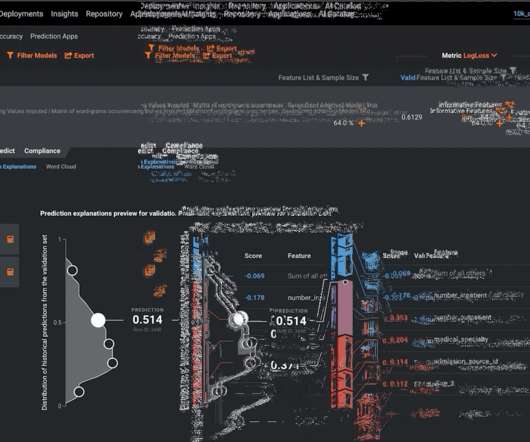Automating Model Risk Compliance: Model Validation
DataRobot Blog
MAY 26, 2022
When the FRB’s guidance was first introduced in 2011, modelers often employed traditional regression -based models for their business needs. Furthermore, through its interactive interface, the modeler is able to do multiple what-if analyses to see the impact of changing the prediction threshold on the corresponding model precision and recall.














Let's personalize your content